The Crush of Urbanity: Fact and Fiction
Published on March 1st, 2016
PDF Download: crush_of_urbanity_issues_piece_2016.pdf
By Claude Willey
March 2016
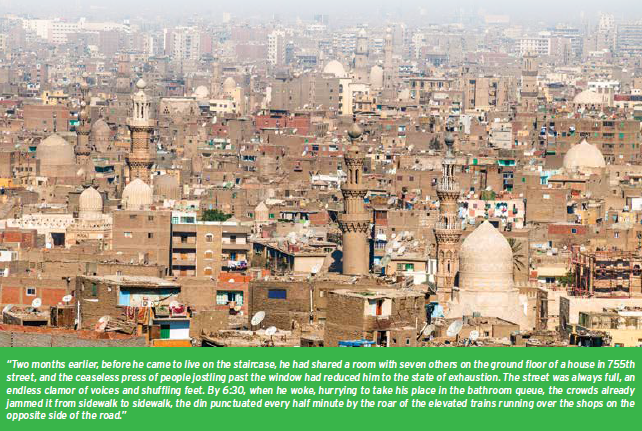
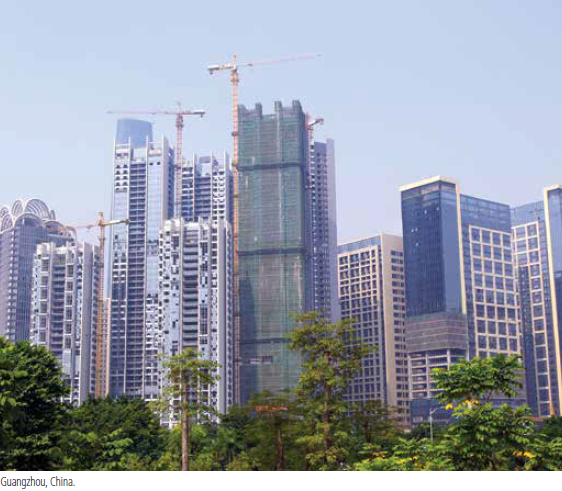 The excerpt is from the short story, “Billennium,” written in 1961 by the late British writer, J.G. Ballard, perhaps best known for two of his novels which were turned into films, “Crash” and “High Rise.” Coming out shortly before concerns over rising human population numbers would reach their apex in the 1960s and ‘70s when Paul R. Ehrlich’s The Population Bomb came to the attention of a mass audience, the piece is a wonderful exercise in the absurd. Ballard’s fictional tale of an overpopulated, almost unlivable metropolis seemed far-fetched, almost surreal for its time. But how far off from reality was Ballard’s vision?
The excerpt is from the short story, “Billennium,” written in 1961 by the late British writer, J.G. Ballard, perhaps best known for two of his novels which were turned into films, “Crash” and “High Rise.” Coming out shortly before concerns over rising human population numbers would reach their apex in the 1960s and ‘70s when Paul R. Ehrlich’s The Population Bomb came to the attention of a mass audience, the piece is a wonderful exercise in the absurd. Ballard’s fictional tale of an overpopulated, almost unlivable metropolis seemed far-fetched, almost surreal for its time. But how far off from reality was Ballard’s vision?
By the early ‘70s, interest in “overpopulation” had become something the average westerner was well aware of. It was no longer a subject of discussion for biologists in university departments only. Architects, geographers and town planners around the world were provoked by discussions of exploding populations and massive city regions. And some made the issue of rising human numbers a key facet of their research.
Two Greek scholars, Constantinos Doxiadis and J. G. Papaioannou, captured attention with their evocative concept of the Ecumenopolis, a single functional world city. In their view, the major cities of the world would soon coalesce into massive urban forms dominated not by one main city center, but by many. Such polycentric visions were already a reality at the time. In the 1950s, French geographer Jean Gottman had coined the term, Megalopolis, in his description of the chain-like form of urban development stretching from Boston to Washington, D.C.
Doxiadis and Papaioannou’s prediction would expand on Gottman’s observations. Imagining high-density urban settlements that would connect the urban cores within South America, Africa and Asia, the two scholars forecasted a world population of 9.6 billion by 2050 with 70 percent of the global population inhabiting these new urban forms. Looking farther into the future, they saw human population growth reaching 20 billion by 2100 and 50 billion by 2200. They didn’t conjure up much imagery concerning the actual quality of life for those on the ground, nor did they address the nonhuman natural world trampled under by this frenzied urban expansion. The bird’s-eye view the two proposed seemed a bizarre thought experiment not far off from the Ballardian world of science fiction.
Although Doxiadis and Papaioannou’s visions may have seemed wildly exaggerated, recent assessments of the relationship between the world’s growing population and its accommodating urban form should give us pause. Moving into the 21st century we encounter new terms to help us describe what we are actually seeing. The Philippine-Canadian scholar, Aprodicio A. Lacquian, has dubbed what urban geographers have been witnessing in Asia for the last few decades as “Mega-Urban Regions.” Cities like Dhaka, Karachi, Mumbai, Jakarta, Manila and their sprawling regions are seeing annual growth rates swing upward as they face problems with squatting, inadequate transport, high unemployment rates and dangerously high levels of environmental pollution. The mega-urban form Lacquian identified makes us think that Doxiadis and Papaioannou’s prophesies just might be realized.
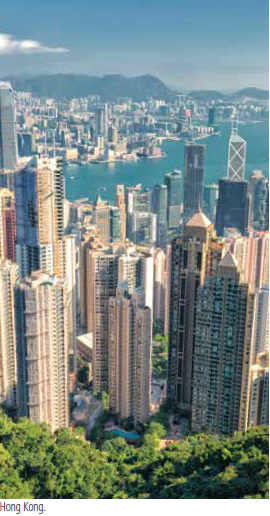 China’s Yangtze River Delta mega-region, dominated by Shanghai, the “head of the dragon,” is megalopolitan sprawl on steroids, covering more than 60,000 square miles of land with a population of 72.7 million. Slightly smaller is the Pearl River Delta Region, driven by cities like Guangzhou, Hong Kong, Shenzhen and Zhuhai. Predicted to reach a population of 51 million by 2022, the PRD region is made up of two large cities, nine medium-sized cities, 22 small cities and 300 towns. These extended metropolitan regions are forces to be reckoned with. To some, they are science fiction nightmares; to others, places of hope. But whether the planet can sustain their massive footprints remains to be seen.
China’s Yangtze River Delta mega-region, dominated by Shanghai, the “head of the dragon,” is megalopolitan sprawl on steroids, covering more than 60,000 square miles of land with a population of 72.7 million. Slightly smaller is the Pearl River Delta Region, driven by cities like Guangzhou, Hong Kong, Shenzhen and Zhuhai. Predicted to reach a population of 51 million by 2022, the PRD region is made up of two large cities, nine medium-sized cities, 22 small cities and 300 towns. These extended metropolitan regions are forces to be reckoned with. To some, they are science fiction nightmares; to others, places of hope. But whether the planet can sustain their massive footprints remains to be seen.
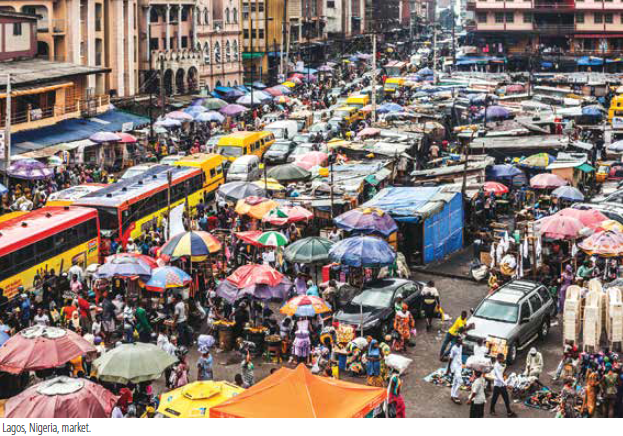 American-style sprawl has become the model for the lateral expansion of Chinese cities. “Ta da bing” or “making a big pancake” describes the phenomenon quite nicely. With each passing year, housing estates spring up and extend farther into the countryside. Denser than what we’ve seen built here in the states over the last half-century, this relatively new building style in China is based on the increasingly global middle-class vision of the single family home and the private automobile.
American-style sprawl has become the model for the lateral expansion of Chinese cities. “Ta da bing” or “making a big pancake” describes the phenomenon quite nicely. With each passing year, housing estates spring up and extend farther into the countryside. Denser than what we’ve seen built here in the states over the last half-century, this relatively new building style in China is based on the increasingly global middle-class vision of the single family home and the private automobile.
In the late 1970s, there were less than 200 cities in China. Today there are nearly 700. Shanghai, Beijing, Shenzhen, Guangzhou, Dongguan, Chongqing, Nanjing and Shenyang each are home to more than 8 million persons. At present, China has 102 cities with more than 1 million people. Urban dwellers account for 54 percent of the Chinese population, compared to 81 percent here in the United States. If China reaches that percentage in the near future, the country would have more than 1 billion urban dwellers.
Looking beyond Asia, we find humongous urban settlements in other places as well. Lagos, Nigeria, which passed Cairo in 2012 to become the largest city in Africa, has a population of around 21 million with expectations to grow beyond 25 million by 2025. As awareness heightened of overpopulation in the late ‘60s and early ‘70s, the population of Lagos was approximately 1.4 million. Filled with pervasive slums, and plagued by infrastructural problems, such as insufficient water provisioning and inadequate roads, Lagos ranks 144 out of 169 in the United Nation’s Human Development Index.
Lagos is a city in disarray. Architect Rem Koolhaas has called it the “terminal city,” meaning it’s a clear example of where he believes cities are headed in the 21st century. To Koolhaas, the city’s “improvisational urbanism” defined by its lack of streets, a large percentage of its industrial activities taking place out in the open, and incredibly high population density point to a new urban world. It is a world that Koolhaas seems to take great pleasure in, much like 21st century urbanists who have romanticized the walking city of 19th century Europe—relishing the efficiency of it, but ignoring the cholera, class struggles and the eternal problem of solid waste removal.
Lagos is a city filled with possibility for the many trying to pull themselves out of poverty and strive for a better life, but the unsightliness of the city makes it a hard sell. It is a place unhinged, over-urbanized and being pushed to the brink by its inability to keep pace with an influx of newcomers and the rising standard of living for those moving towards middle-class lifestyles.
In Ballard’s “Billennium,” his characters try to make sense of the rising tide of humans but are lost amongst the misinformation:
“Rossiter worked in the Insurance Department at the City Hall, had informal access to the census statistics. For the last ten years, these had been classified information, partly because they were felt to be inaccurate, but chiefly because it was feared they might set off a mass attack of claustrophobia. Minor outbreaks had taken place already, and the official line was that the world population had reached a plateau, leveling off at 20,000 million. No one believed this for a moment, and Ward assumed that the 3 percent annual increase maintained since the 1960s was continuing….Despite the gloomiest prophecies of the Neo-Malthusians, world agriculture had managed to keep pace with population growth, although intensive cultivation meant that 95 percent of the population was permanently trapped in vast conurbations.”
Lacking the means for a complete and thorough census, planning efforts in Lagos today are stunted by the inability to keep a proper headcount. Thousands enter the city from the hinterlands each week. According to P.H. Liotta and James F. Miskel, authors of The Real Population Bomb: Megacities, Global Security, and the Map of the Future, “the Nigerian government has attempted to collect census data but has been heavily criticized for shorting the count.”
We are often told that cities are the panacea for the planet’s ecological woes. More urban dwellers means less rural dwellers, less rural poverty and fewer children needed to work the farm. The city is a place of limited space, so the argument goes, and within it unsustainable levels of consumption are curtailed. The extravagance of suburban living and its over-sized McMansions is reeled in. It is in the city where the increasing availability of education for women can be found, which usually results in women having less children and having them later in life—often called the final stage of the Demographic Transition.
In our present age, it is common for many academics in the social sciences to see the city, even if it is teeming with slums and declining in environmental conditions, as the place of hope in the 21st century. The fast-growing megacity is perceived as the cure for humanity; the rest of the world be damned. This is a very strange thing that has happened. The overpopulated city of Ballard’s “Billennium” and the overstocked Los Angeles featured in Ridley Scott’s “Blade Runner” are somehow attractive oddities.
Scan the list of books being published about cities and you’ll find the term “sustainability” or “green” used in most titles. As the argument goes, dense cities are a must as they make things more efficient: better water provisioning, better access via public transport and, often, a smaller footprint. But what the proponents of the sustainable world city often forget is that as the gigantic cities of the world lurch forward, the nonhuman world falls victim to their voracious appetites.
William Rees and Mathis Wackernagel, devisers of the “ecological footprint” concept, conducted a study many years back showing that the city of Vancouver needs roughly 12,000 square miles to support what at the time was a population of more than 500,000. Vancouver needed a productive land-base nearly 180 times larger than the city itself to sustain the quality of life for that city’s people. Keep in mind that Vancouver is no megacity of 10 million, nor is it part of a giant mega-urban region.
Canadian naturalist Stan Rowe mused on our religion of urbanity:
“There must be other choices. Forty years after ‘Silent Spring’ and the dawning of the Age of Ecology, all glowing commendations of cities as engines of economic growth seem slightly perverse. The thesis that cities are the source of wealth is correct only in the sense that today’s human wealth is nature’s wealth made over by urban know-how. But a world of growing cities, each building up its industrial plant to reducedependency on imports so as to become itself a competitive exporter, is a recipe for global disaster. Only the naive can be optimistic and confident that city wealth and city technology will solve the environmental problems they create out of sight beyond their borders.”
At the end of Ballard’s “Billennium,” the main character, Ward, inadvertently puts his fist through his apartment wall only to find beyond it an additional unoccupied 15 square feet. Ward and his roommate, Rossiter, find the spaciousness of their new abode exhilarating, but within days they’ve invited two female acquaintances who in turn bring along a few of their relatives to move in. Faster than they’ve realized, their apartment is once again oppressive and confined.
In the final lines of the story, Ward disassembles the remaining pieces of a Victorian wardrobe to allow for more space in the apartment. He is filled with regret when he remembers what the furniture salesman had told him at the time of purchase: there were few pieces like it left. “Then he pulled himself together. It was a beautiful wardrobe, without doubt, but when it was gone it would make the room even larger.”
Are humans the only mammals willing to live at such high densities? Why have humans gravitated towards cities and backgrounded the greater ecology on which these places depend? What is it that present and future generations are denying as they flock to the mega-urban regions of the world in search of a better life?
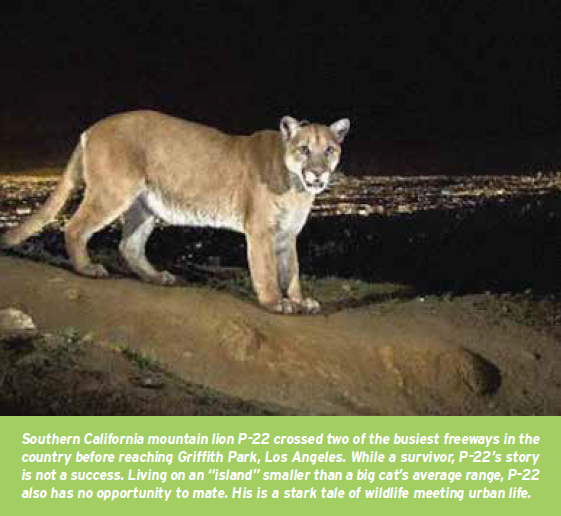 Doxiadis, Papaioannou and Ballard imagined in their own ways a strikingly similar dystopic human habitat transformed by rising population numbers. Now it is up to us to determine the fate of all the old Victorian wardrobes cast aside to make room for ever more density-tolerant bipeds. In “Requiem for Nature,” ecologist John Terborgh put it eloquently in his book:
Doxiadis, Papaioannou and Ballard imagined in their own ways a strikingly similar dystopic human habitat transformed by rising population numbers. Now it is up to us to determine the fate of all the old Victorian wardrobes cast aside to make room for ever more density-tolerant bipeds. In “Requiem for Nature,” ecologist John Terborgh put it eloquently in his book:
“If we imagine a future in which one species, Homo Sapiens, harvests 80 percent of the earth’s primary productivity for its own purposes, then the amount left over for all other species could be no more than 20 percent…Humans and other species are thus in competition for the same living space, a competition that will be won by humans wherever self-imposed restraints do not prevail.”
As the human project expands, the nonhuman natural world contracts. Will the “self-imposed restraints” Terborg mentions be viable choices for those living in an increasingly urban world? Will the natural world always lose in this battle for space? What else are we willing to give up to allow more humans on this already crowded urban planet?
A lecturer in Urban Studies and Planning at California State University, Northridge, Claude Willey has investigated Mojave Desert hydrology, trajectories in the Inland Empire and Pleistocene extinctions. He also is a dedicated bicycle commuter in one of the country’s most autocentric regions.




